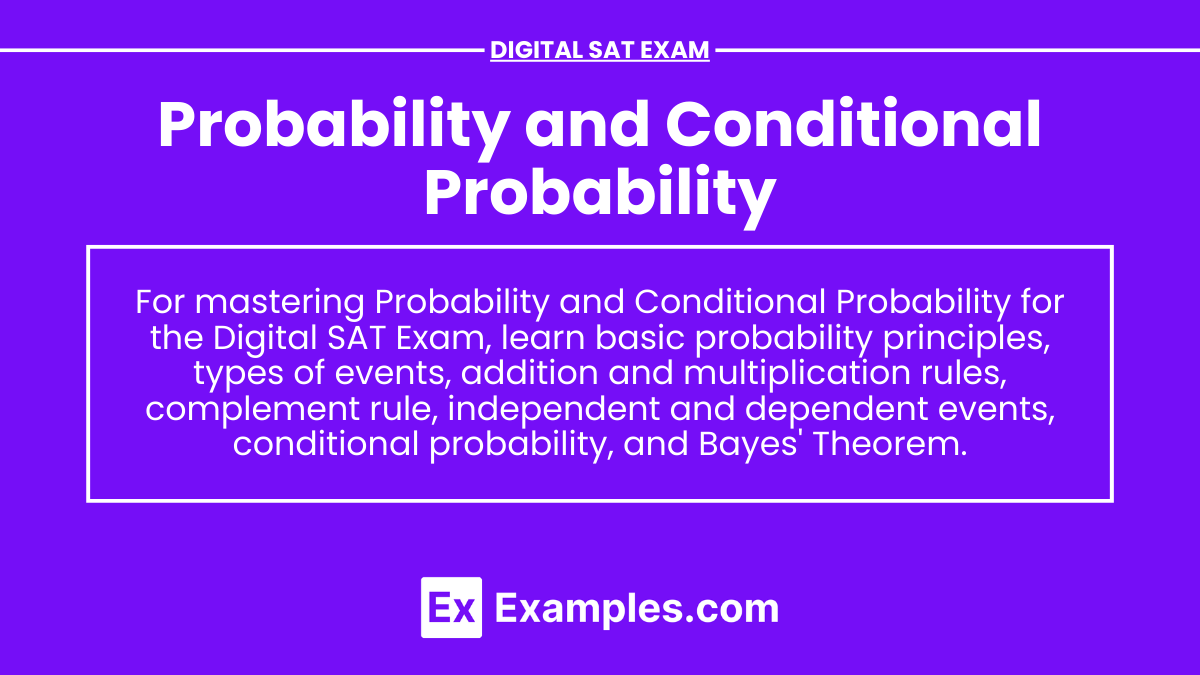Probability is a fundamental concept in mathematics that measures the likelihood of an event occurring. It is essential for understanding and solving a wide range of problems, from simple games of chance to complex statistical analyses. For the Digital SAT Exam, mastering probability and conditional probability is crucial, as these concepts frequently appear in various types of questions. Probability quantifies uncertainty and helps in making informed decisions based on the likelihood of different outcomes. Conditional probability, a more advanced aspect, deals with the probability of an event occurring given that another event has already occurred.
Learning Objectives
In this section, you will learn to understand and calculate the probability of events, differentiate between independent and dependent events, and use conditional probability to solve complex problems. You will also learn to apply these concepts to real-world scenarios and problems presented in the Digital SAT Exam. By the end of this section, you will be able to confidently handle probability and conditional probability questions, enhancing your overall problem-solving skills.
Basic Concepts of Probability
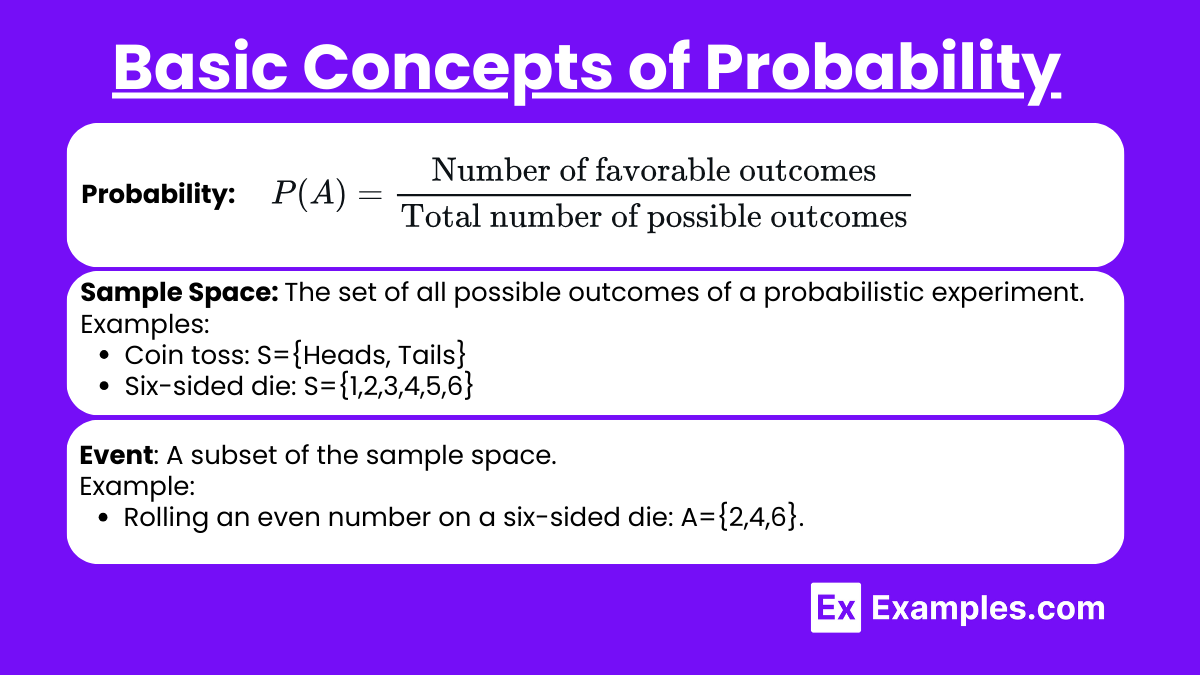
Definition of Probability: Probability is defined as the ratio of the number of favorable outcomes to the total number of possible outcomes in a sample space. The probability PPP of an event A occurring is given by:
![]()
Sample Space: The sample space (denoted as S) is the set of all possible outcomes of a probabilistic experiment. Each possible outcome is called a sample point.
Example:
- For a single coin toss, the sample space is S={Heads, Tails}.
- For rolling a six-sided die, the sample space is S={1,2,3,4,5,6}
Event: An event is a subset of the sample space. An event can consist of one or more outcomes. Events are typically denoted by uppercase letters like A, B, and C.
Example:
- In the context of rolling a six-sided die, the event of rolling an even number can be represented as A={2,4,6}.
Types of Events
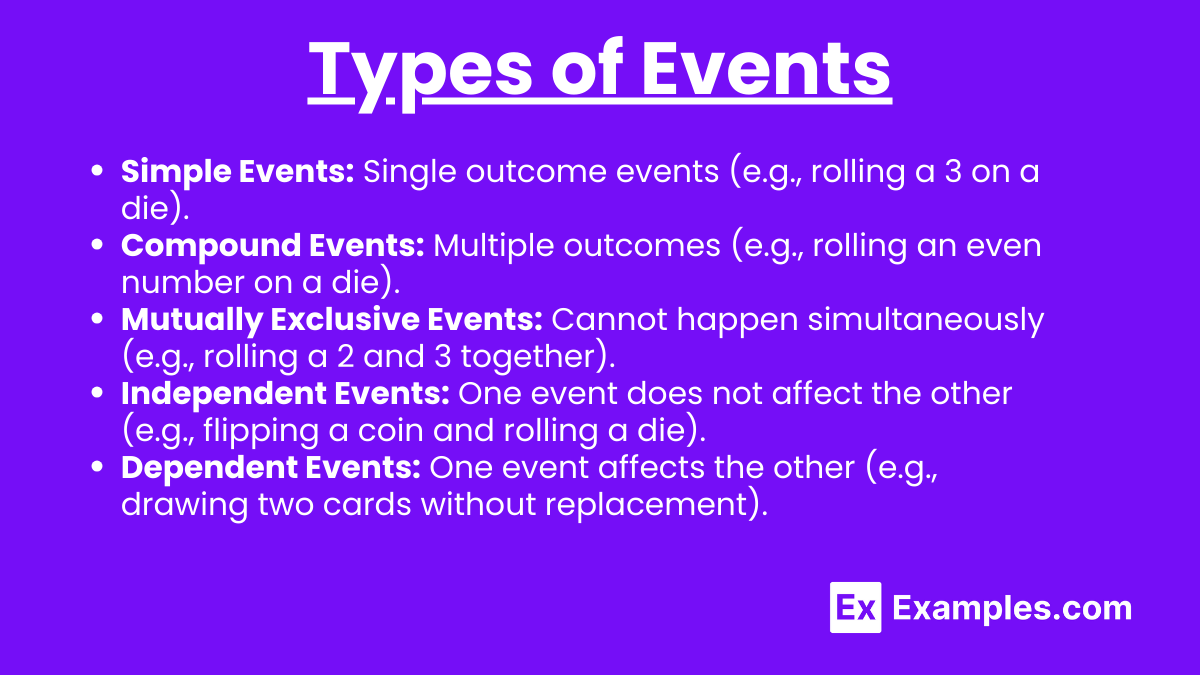
Simple Events: Events that consist of a single outcome. For example, rolling a 3 on a six-sided die.
Compound Events: Events that consist of more than one outcome. For example, rolling an even number on a six-sided die (2, 4, or 6).
Mutually Exclusive Events: Events that cannot happen at the same time. For example, rolling a 2 and a 3 on a single die roll.
Independent Events: Events where the occurrence of one does not affect the occurrence of the other. For example, flipping a coin and rolling a die.
Dependent Events: Events where the occurrence of one event affects the occurrence of the other. For example, drawing two cards from a deck without replacement.
Calculating Probability
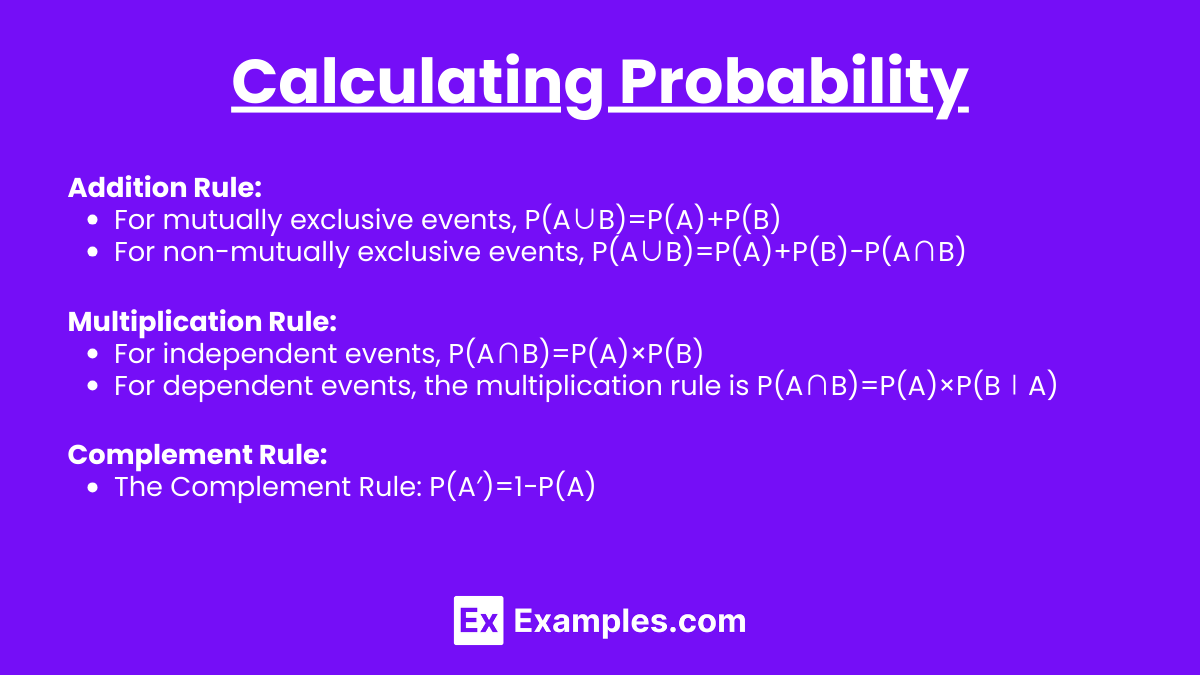
Addition Rule: The Addition Rule is used to find the probability that event A or event B occurs (i.e., A∪B, the union of A and B).
For mutually exclusive events, the addition rule is:
P(A∪B)=P(A)+P(B)
For non-mutually exclusive events, the addition rule is:
P(A∪B)=P(A)+P(B)−P(A∩B)
Multiplication Rule: The Multiplication Rule is used to find the probability that both events A and B occur (i.e., A∩B, the intersection of A and B).
For independent events, the multiplication rule is: P(A∩B)=P(A)×P(B)
For dependent events, the multiplication rule is: P(A∩B)=P(A)×P(B∣A)
Complement Rule: The Complement Rule states that the probability of the complement of an event A (denoted as A′) is equal to 1 minus the probability of the event A.
P(A′)=1−P(A)
Conditional Probability
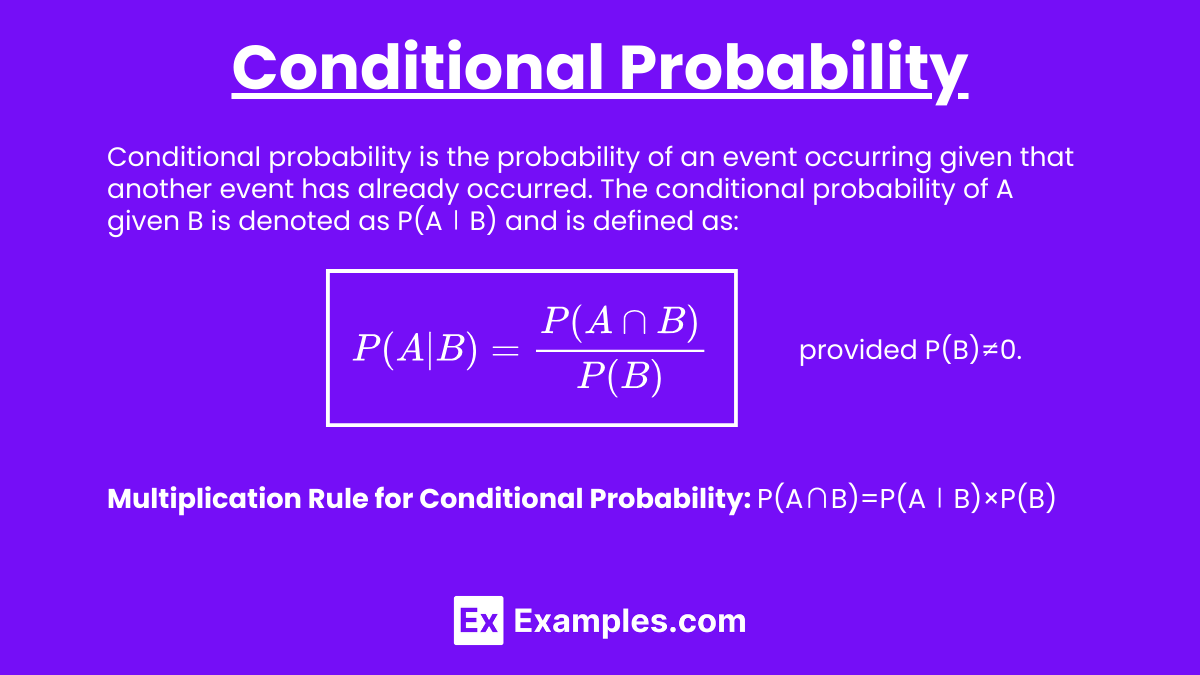
Definition: Conditional probability is the probability of an event occurring given that another event has already occurred. The conditional probability of A given B is denoted as P(A∣B) and is defined as:
![]()
provided P(B)≠0.
Multiplication Rule for Conditional Probability: For any two events A and B:
P(A∩B)=P(A∣B)×P(B)
Bayes’ Theorem
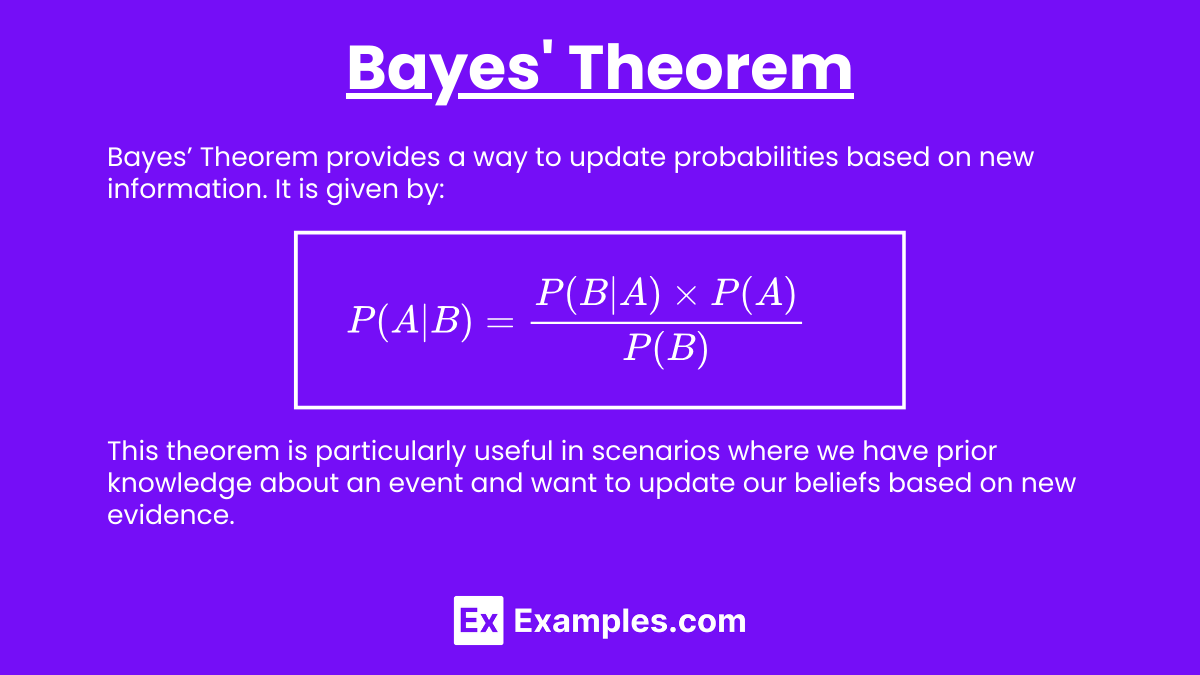
Bayes’ Theorem provides a way to update probabilities based on new information. It is given by: P(A∣B)=P(B)P(B∣A)×P(A) This theorem is particularly useful in scenarios where we have prior knowledge about an event and want to update our beliefs based on new evidence.
Bayes’ Theorem provides a way to update probabilities based on new information. It is given by:
![]()
This theorem is particularly useful in scenarios where we have prior knowledge about an event and want to update our beliefs based on new evidence.
Applications of Probability and Conditional Probability
Probability and conditional probability are used in various fields such as finance, medicine, and engineering to make predictions and informed decisions. For example, in medical testing, conditional probability helps in determining the likelihood of a disease given a positive test result.
Examples of Probability and Conditional
Probability
Example 1: Simple Probability
What is the probability of rolling a 4 on a six-sided die?
![]()
Example 2: Compound Probability
What is the probability of rolling an even number on a six-sided die?
![]()
Example 3: Conditional Probability
If a card is drawn from a standard deck, what is the probability that it is an ace given that it is a spade?
![]()
Example 4: Independent Events
What is the probability of flipping a coin and getting heads and then rolling a six-sided die and getting a 5?
![]()
Example 5: Bayes’ Theorem
If 1% of a population has a particular disease and a test for the disease has a 99% accuracy rate, what is the probability that a person has the disease given a positive test result? (Assume the false positive rate is 1%.)
![]()
P(positive test)=P(positive test∣disease)×P(disease)+P(positive test∣no disease)×P(no disease)
P(positive test)=0.99×0.01+0.01×0.99=0.0198
P(disease∣positive test)=0.01980.99×0.01≈0.5.
Practice Questions
Question 1
A jar contains 5 red balls, 3 blue balls, and 2 green balls. If a ball is drawn at random, what is the probability that it is either red or green?
![]()
![]()
![]()
![]()
Answer: C
Explanation: The probability of drawing a red ball is ![]() and the probability of drawing a green ball is
and the probability of drawing a green ball is ![]() . Since these events are mutually exclusive, their probabilities add up:
. Since these events are mutually exclusive, their probabilities add up:
![]()
Question 2
If a card is drawn from a standard deck of 52 cards, what is the probability that it is a queen given that it is a face card?
![]()
![]()
![]()
![]()
Answer: C
Explanation: There are 12 face cards in a deck (4 queens, 4 kings, 4 jacks). Given that the card is a face card, the probability that it is a queen is:
![]()
Question 3
In a school, 60% of the students are boys, and 70% of the boys play football. What is the probability that a randomly selected student is a boy who plays football?
A) 0.42
B) 0.50
C) 0.40
D) 0.35
Answer: A
Explanation: To find the probability that a randomly selected student is a boy who plays football, we need to use the multiplication rule for dependent events.
- Probability of selecting a boy:
P(Boy)=0.60 - Probability of a boy playing football given that the student is a boy:
P(Plays Football∣Boy)=0.70 - Combined Probability (Boy who plays football): The probability that a student is a boy and plays football is given by:
P(Boy and Plays Football)=P(Boy)×P(Plays Football∣Boy)
Substitute the given probabilities:
P(Boy and Plays Football)=0.60×0.70=0.42
Thus, the probability that a randomly selected student is a boy who plays football is 0.42.

